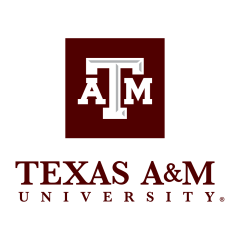Well before the pandemic accelerated digital transformation across the higher education industry, Texas A&M University had already modernized payments on campus. In 2012, the Student Business Services team went cashless, eliminating the ability for students and families to make cash payments for tuition and fees. In doing so, they optimized the payment experience alongside improving security, efficiency, staff morale, and though they didn’t know how critical it would be at the time, ensured robust business continuity.
What’s more, in becoming cashless and streamlining its processes and internal operations, Texas A&M University has been somewhat cushioned against the impact of challenges many institutions across the U.S. are facing, including:
- Increasing volatility in international student enrollment impacting cash flow
- Education affordability driving a need for more flexibility
- Limited resources impacting internal operational efficiency
Texas A&M’s story not only offers advice for other institutions seeking to go cashless, but shows the positive effects that focusing attention on systems and processes—on the part of the student finance office—has on solving many of the biggest challenges in higher ed while supporting student success.
Resource drain and security risk, transformation needed
While most students were already paying their University tuition and fees online, a small but significant proportion still paid using checks and cash. Texas A&M’s cash payments alone accounted for $1.4 million and required manual processing. These cash payments presented security risks that couldn't be ignored. So, with the full support of the University’s senior management team, Jennifer Lightfoot, Executive Director for Student Business Services, set about eliminating cash and check payments for tuition and fees. Her objectives were to improve security, efficiency, and customer service provision, reduce onerous federal reporting responsibilities, and leverage new technology to improve the payment process for students and their families.
As Jennifer put it “we wanted to enhance the service we already provided to our students and parents, to spend more time with them on things they truly needed. We also wanted to make it easier for parents and students to pay us.”
Effective and targeted internal and external communication was critical to achieving buy-in from key stakeholders. Affected staff needed reassurance that they would be reallocated to higher value work, rather than laid off. For student payers, it was important to communicate that they would still have choices in the form of in-person debit card and mobile payments, as well as the existing online payments, that would make paying tuition fees easier, faster, and more secure.
Texas A&M officially went cashless more than a decade ago, in the Fall semester of 2012, and cash payments reduced substantially almost immediately. By the following year, the Student Business Services team took just $2,000 in cash payments which, very soon after, reduced to zero. The team received very few student complaints about the change, and internally, the benefits were immediate. The team saw reduced errors stemming from in-person payments, a reduction in the effort needed to reconcile payments and keep up with federal reporting responsibilities, and in liability overall. Morale among former cashiers also improved as they felt they were supporting finance staff and students in a more valuable way.
Top tips for going cashless:
- Be flexible: There will be situations that require an exception. Be prepared to have conversation with students and family when needed, and always treat them as the individuals they are.
- Target your communications: Students who have never paid in cash won't be significantly impacted by the change, so it’s important to segment your audience and craft communications that will resonate appropriately.
- Offer options: Soften the blow when removing a payment option by highlighting the new and existing alternatives available and the benefits of those alternatives.
Technology delivers value in challenging times
Texas A&M University is a testament to how streamlining payments delivers real value, which is critical for students and families as well as institutions today. Higher education institutions across the U.S. are facing ever more volatile enrollment trends coupled with an escalating affordability crisis, shifts in payer behavior, and limited internal resources. Changes in cash flow, demands for flexibility, and options to suit diverse payer needs mean that finance teams are under more pressure than ever before.
With rising tuition costs across the industry, more and more students and families are turning to loans and demanding flexible payment options. Bursars are not only tasked with maintaining enrollment and cash flow, but also with providing flexible options to help students—both domestic and international—afford tuition payments. There has also been a simultaneous trend of students falling behind with payments, putting them at risk of registration holds, dropping out, or ending up in collections. While the data shows that early intervention drastically improves the collection of outstanding receivables, and ultimately the retention of these students, staffing resources and tools are typically an impediment to taking timely action.
Internally, higher education institutions often use disparate legacy systems that don’t connect, providing several sources of information and creating unnecessary work, costing finance teams time and money. All in all, these external and internal factors are putting constant (and increasing) pressure on finance teams to do more with less.
One way to alleviate this pressure is to leverage technology, and despite the successful move to cashless payments, Texas A&M University was also feeling the same pressure, and the team knew that more improvements were necessary. They have implemented Flywire’s Student Financial Software for domestic and international payments, including:
- Dynamic billing: Real-time updates to balances improves the student experience and reduces inquiries to the Student Business Services team.
- Payment plans: Anticipated aid can be factored into the balance owed improving installment accuracy and enabling students to begin making payments sooner. Over 60,000 payment plans have been set up, totaling more than $331 million.
- Collection management: Automated communications & flexible payment plans improve collections, enabling 40+ students to re-enroll and pay off their past-due balances.
- Third-party invoicing:Easily and securely create, issue and track invoices to engage 400+ sponsors and encourage timely payments.
- eStore: Manage a robust online eStore marketplace of nearly 450 stores where students, alumni and others can securely purchase 2300+ goods and services, register for events, pay membership dues, fines and course registration fees, and more.
- ERP integration: A secure transfer between Flywire and Texas A&M’s ERP, Ellucian Banner, streamlines the billing and payment process and automates reconciliation.
With these solutions in place, Texas A&M has a single source of truth with automated, streamlined communications and a unified place for students and families to access billing and payment information that supports our cashless environment.

Find out more
- Discover more about Flywire’s Ellucian-validated Banner integration
- Find out how Texas A&M’s approaches collections to keep more students enrolled
- Learn how payment plans are helping Tennessee State University meet the needs of its largest ever class
- Learn how Flywire’s Student Financial Software delivers efficient billing, payment, and collection management for colleges and universities
- Register for Flywire Fusion to hear firsthand how Texas A&M collaborates across campus to drive change

